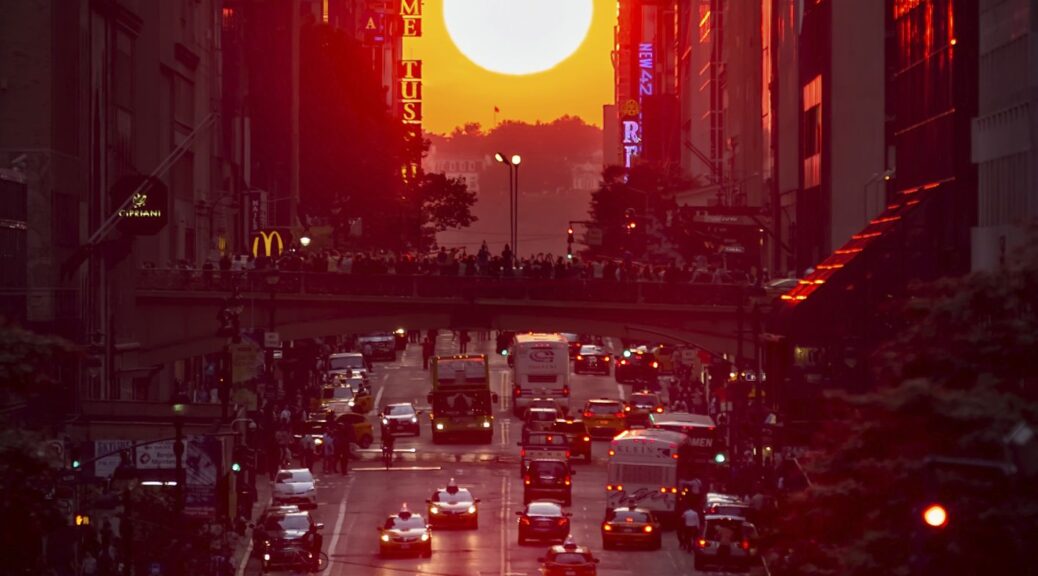MANHATTANHENGE is a term that was recently popularized by renowned astrophysicist Neil deGrasse Tyson. The term is a nod to Stonehenge, a prehistoric observatory located in Wiltshire, England. Stonehenge consists of a circle of massive slabs of stacked stone. An outlying stone, known as the Heel Stone, sits so its tip aligns with the rising sun on the summer solstice.
Ironically, the term “henge” from the name Stonehenge has nothing to do with astronomy. It’s an ancient precursor to our word “hinge,” and refers to a place where two things join together. Stonehenge, then, means something like, “the place where all those stones are stacked together.”
Most of Manhattan’s east-west streets are aligned at about a 29° angle clockwise from true east-west. So, twice each year, a couple of weeks before and a couple of weeks after the summer solstice, when the azimuth for sunset is 29° northward of due west, the setting sun aligns with the east-west streets at the moment it sits on the horizon. This is known as Half Sun Manhattanhenge because half of the sun is below the horizon.
Today, at 8:13 pm, marks the Half Sun Manhattanhenge; tomorrow , at 8:14 pm, is the Full Sun Manhattanhenge.
The second occurrence will be July 12, 2022: 8:20 pm (full sun); and July 13, 2022: 8:21 pm (half sun)
The exact date of the Manhattanhenges varies each year, depending on the date of the summer solstice, but they usually fall around at the end of May and mid-July. The best streets to capture the event are the larger cross streets that ensure the best views of the west-northwest horizon (toward New Jersey), including 14th, 23rd, 34th, 42nd, and 57th. Neil DeGrasse Tyson notes, “The Empire State Building and the Chrysler Building render 34th Street and 42nd Street especially striking vistas.”
Just don’t stand in the middle of the street when viewing or trying to capture a photo!
